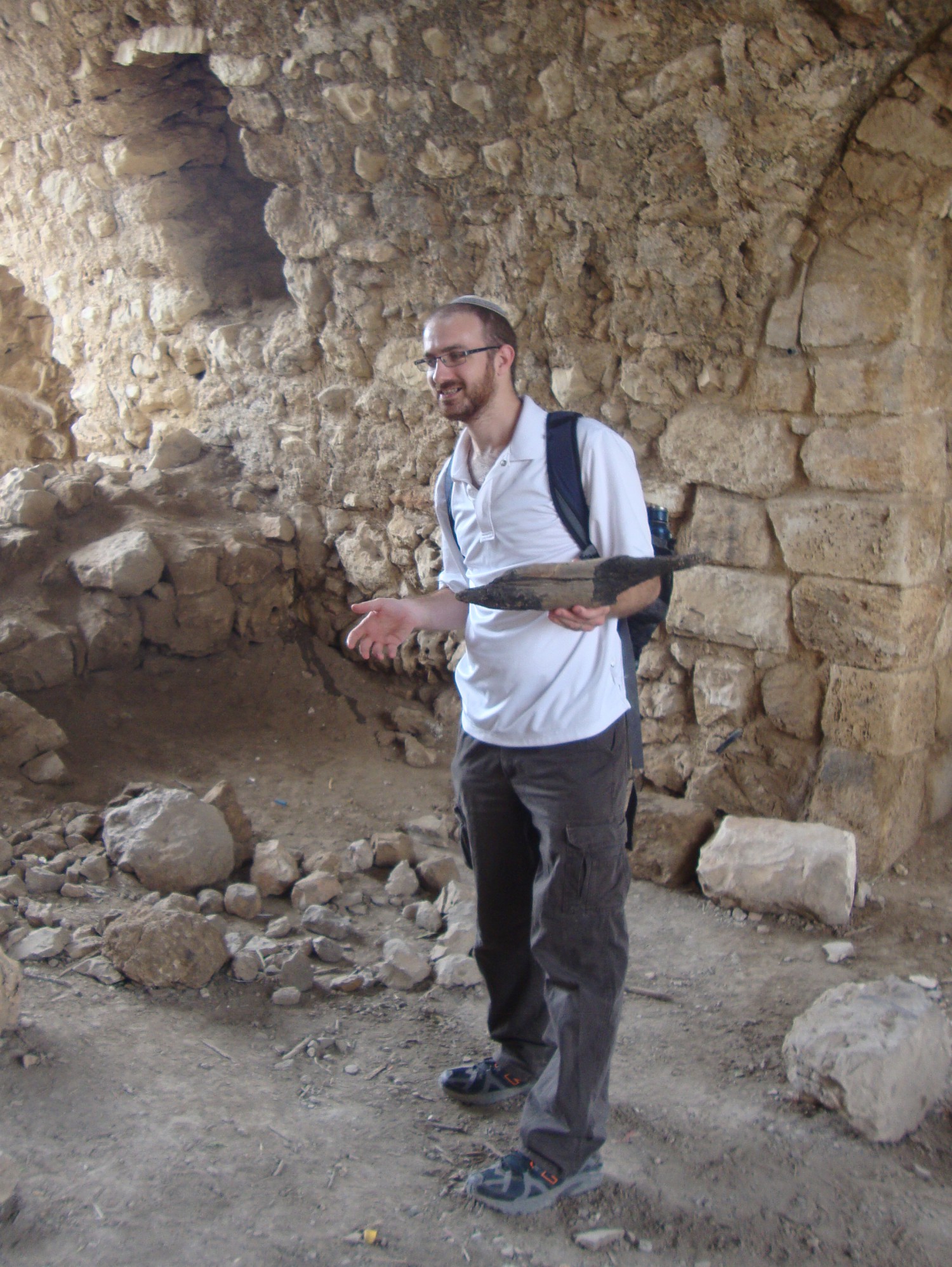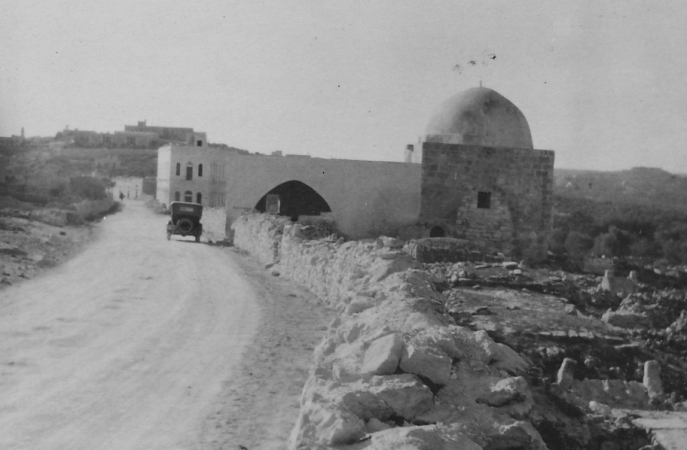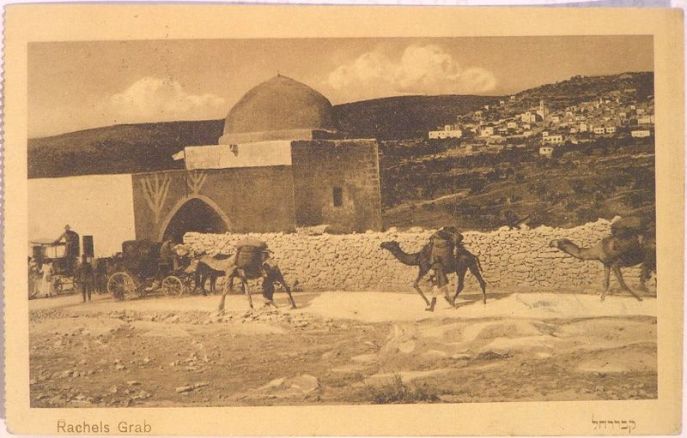Trivia time: where is this site?
Sorry, trick question.
Technically, this site doesn’t actually exist anymore. Having undergone many changes over its very long history, the present day “Rachel’s tomb” is currently housed in what seems like a military fortress. What is the significance of this site for biblical history, Israeli geography and current Israeli history?
Let’s go back in time a bit. Jacob, son of Isaac is a revered figure In all Abrahamic religions. Like countless men of faith, his life was anything but easy. Near the end of his long life he laments:
The years of my earthly sojourn are one hundred thirty; few and hard have been the years of my life. They do not compare with the years of the life of my ancestors during their long sojourn. (Genesis 47: 9, NRSV)
One of Jacob ‘s many trials related to his beloved wife, Rachel. Normally short on romance, the book of genesis relates at some length their relationship and ups and downs regarding Rachel’s infertility.
Rachel, feeling the pain of all infertile women through the ages screams unto Jacob:
Give me children, or else I die!
Jacob, feeling pain of all men of faith when their faith clashes with personal setbacks, (especially domestic) screams back:
Am I in God’s stead, who hath withheld from thee the fruit of the womb? (Genesis, 30 1-2, NKJV)
By the end of the chapter, happily Rachel does give birth to her first son, Joseph. Several chapters later, Jacob and his entourage are traveling towards Eprath.
Then they journeyed from Bethel; and when they were still some distance from Ephrath, Rachel was in childbirth, and she had hard labor. When she was in her hard labor, the midwife said to her, “Do not be afraid; for now you will have another son.” As her soul was departing (for she died), she named him Ben-oni; but his father called him Benjamin. So Rachel died, and she was buried on the way to Ephrath (that is, Bethlehem), and Jacob set up a pillar at her grave; it is the pillar of Rachel’s tomb, which is there to this day. (Genesis 35 16-20, NRSV)
Rachel dies in childbirth, while giving birth to her second son, Benjamin and the Bible promises us that one can visit the grave of Rachel. Indeed if one follows most modern maps, the building that houses Rachel’s tomb is situated a short 10 minute drive from today’s Jerusalem, just outside the city of Bethlehem, well known to us from the New Testament. The identification of this site, is not from yesterday, its pedigree goes back some 1700 years.
We must mention that Rachel, being one of the mothers of the Jewish people is an important figure in Christianity and Islam as well. However, many Palestinians, including local residents of Bethlehem are of the opinion that housed in this building (originally a mosque, they believe) is the grave or memorial of Bilal bin Rabah, an important figure in early Islamic history.
In my guided tours, provided my clients are interested, I delve into the entire history of the present site, and why it is that many archaeologists, including observant Jews, do not think that this present site matches up with the biblical and historical record. Some have suggested an alternative site, somewhat north of the present site, an ancient, mysterious, place known by local bedu tradition as the “graves of the (mothers) of the Jews”.

A section of the rectangular walled structures, found in the West Bank. Local tradition calls them the “Graves of the Children of Israel”. Some scholars, such as C.S. Clermont-Ganneau and Noga Hareuveni, have identified this site as the authentic spot where according to the Bible Rachel was buried.
In any event, the building in the above photo is more recent. In the 19th century, the famous Anglo-Jewish philanthropist, Sir Moses Montefiore paid to renovate the entire structure, including adding an additional room for Muslim worship and burial preparation. Being childless, Moses and his wife Judith felt connected to Rachel’s story and her tomb – so connected, in fact, that they had a replica built in their home in Ramsgate, England. Upon their passing they were interred in this mausoleum.
In recent years, due to tension in the area, the Israeli army has turned the building and its environs into a literal fortress, complete with high guard towers and patrols. Unfortunately, these renovations have altered the iconic imagery of Rachel’s burial “on the side of the road”. History, passion and politics turn this unique site into an experience that is not to be missed by any person of faith.
Meditation:
So, wait – why should I go visit “Rachel’s Tomb” if she may not even be buried there?
The true importance of Holy sites, in my opinion, lies in the experience. As a historian, I recognize the importance of historical record and accuracy. However, as a guide (and at times a tourist) I also recognize how vital unique experiences are for the soul. Rachel’s tomb – or whatever it is – is a place where people of faith have come to pour out their hearts for a very long time.
Reread the story of Rachel from the bible. What parts of her complex personality resonate with you? Was Jacob wrong to respond to her request for children in such a sharp manner? What significance, if any, do you see in the fact that Rachel is buried alone on the side of the road?
For Further Reading:
נדב שרגאי, על אֵם הדרך – סיפורו של קבר רחל, ירושלים, 2005
נגה הראובני, אור חדש על ספר ירמיהו, תל אביב, 1950
יעקב מדן, מות רחל וקבורתה, 2004
Frederick M Strickert, Rachel Weeping: Jews, Christians, and Muslims at the Fortress Tomb, 2007.


